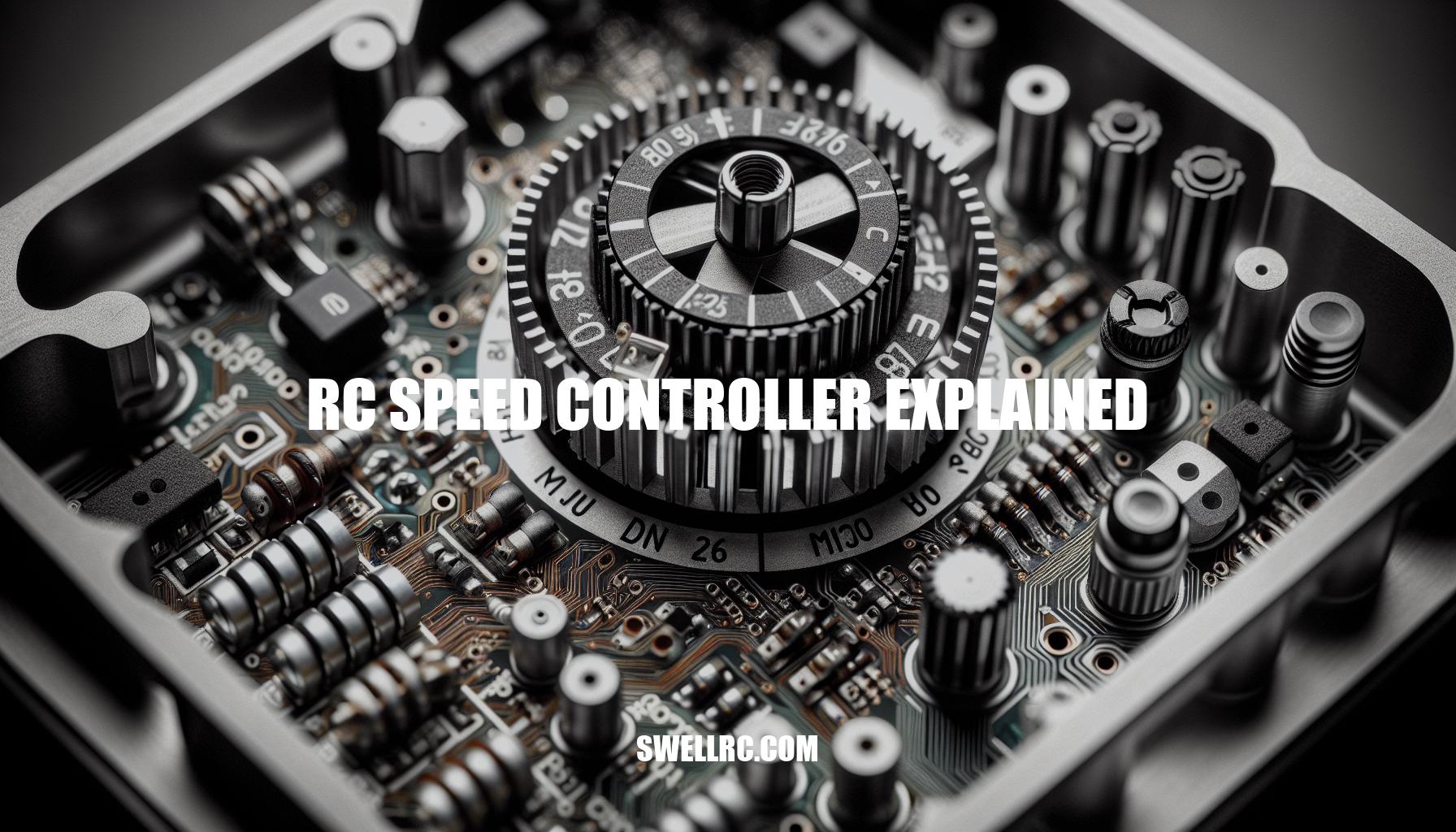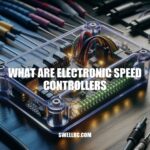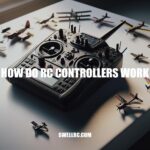RC Speed Controller Explained: Understanding Types, Features, and Maintenance
So, you’re into the thrilling world of radio-controlled vehicles, huh? That’s fantastic! Let’s take a moment to appreciate one of the unsung heroes that keep your machine revved up – the RC Speed Controller. This little powerhouse is just as exciting as it sounds. Essentially acting like the middleman, it governs the motor’s speed in response to commands from your transmitter. Ever wonder why your RC car smoothly accelerates as you gently squeeze the trigger, or comes to halt as you release it? The magic, my friends, lies in the RC Speed Controller. This vital gizmo, nestled somewhere in your RC beast, is working tirelessly so you get the precise control you crave. Its job isn’t easy — but boy, does it deliver! And guess what? Getting to understand how this device operates can significantly improve your tinkering skills and overall RC experience. So, buckle in, and let’s set off on this enlightening journey together.
Demystifying RC Speed Controllers
Ready to unlock the mystery of RC speed controllers? Great, let’s dive into the two primary types: brushed and brushless. They may seem similar, but don’t be fooled – there’s a world of difference between them.
Brushed RC speed controllers, as the name suggests, work with brushed motors. These are the old-school workhorses of the RC world, known for their simplicity and reliability. Brushed controllers pass electricity directly through contact brushes, causing the motor to spin. Despite their lower efficiency and power compared to brushless types, brushed controllers, like the E-flite 40-Amp Pro model, still hold their ground because of their affordability.
On the other hand, brushless RC speed controllers are the new kids on the block. They have no brushes – hence the name – and function via magnetic fields created by current passing through coils inside the motor. With this design, brushless controllers, such as the Hobbywing Xerun series, boast greater efficiency, power, and longevity, but they come at a heftier price.
Whichever you choose, it’s essential to know how they function. Like your favorite suspense thriller, there’s more to the story of RC speed controllers. Stay tuned as we continue with ‘rc speed controller explained’ in upcoming sections.
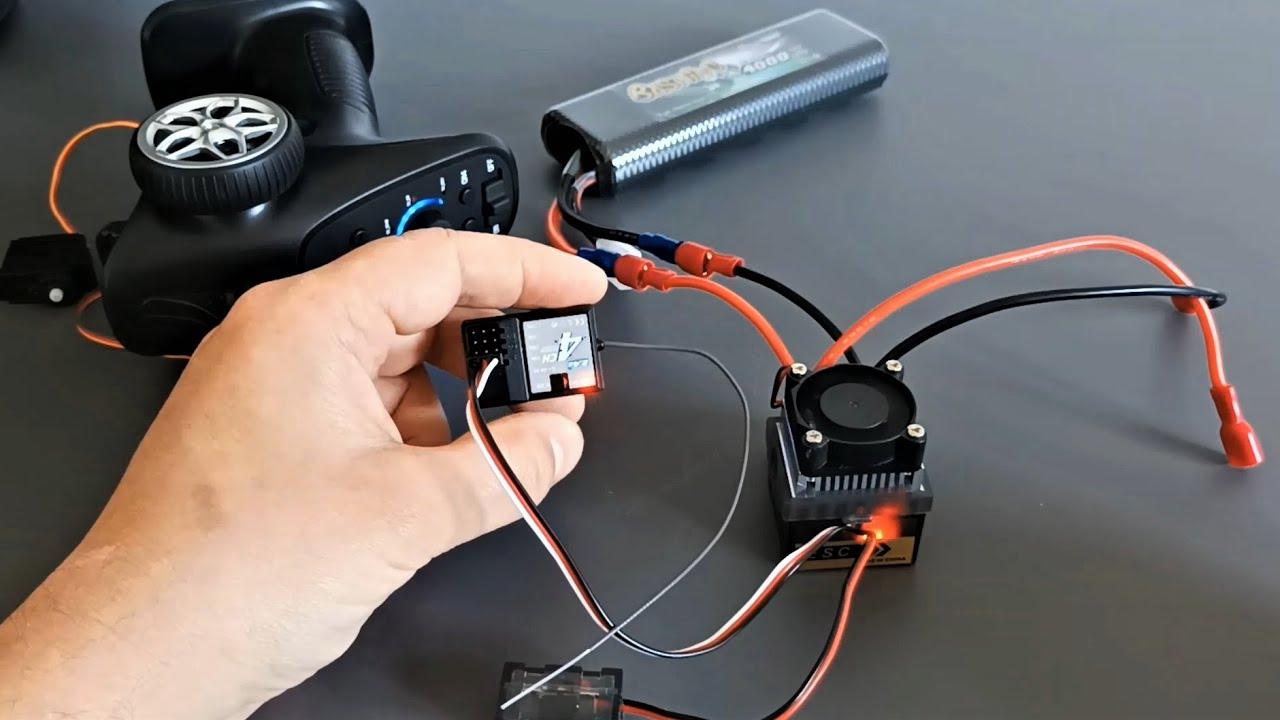
What are the differences between brushed and brushless RC speed controllers?
You know, when we dive into the world of RC vehicles, things can get a bit techy, right? But, hey! Don’t fret, let me break down the key differences between brushed and brushless RC speed controllers for you. So, the main man, a brushed speed controller, has been in the game for a while, and it’s pretty straightforward, affordable, and durable. It’s got brushes physically contacting the motor to control its rotational speed – gotta love a classic. Brushless speed controllers, the hip new kid on the block, offer a lot more in terms of power and efficiency. They operate digitally, which means no physical contact with the motor, less heat, and longer run times. Sure, they cost more than their brushed cousins, but they pay off big in performance and longevity. Remember, it’s like deciding between a reliable, old-school ride and a swanky, high performance sports car. Whichever route you take, just enjoy the ride!
Cracking the Code of RC Speed Controllers
Understanding Features of RC Speed Controllers can feel a bit like trying to crack a secret code, especially if you’re just getting your feet wet in the world of radio-controlled vehicles. But don’t worry, you’re not alone. Let’s break this down, so you can navigate these waters with a bit more confidence.
The heart and soul of a good speed controller lies in its voltage and current ratings. Voltage refers to the amount of electrical pressure that a speed controller can handle. Sort of like how a dam has to be built strong enough to hold back a powerful river, your speed controller needs to be able to handle the voltage from your battery. For instance, Horizon Hobby offers an array of speed controllers with varying voltage ratings to suit different RC models.
Next in line, we have the current rating. Imagine it like a highway; the wider it is, the more cars (or in this case, electrical current) can travel down it. The current rating is the maximum amount of electrical current that the speed controller can handle without overheating. Higher power motors and batteries generally need speed controllers with higher current ratings.
Let’s talk about something a bit more esoteric – a term called Poisson Frequency. Now, this is the rate at which your speed controller checks the position of the motor’s rotor and adjusts its power output accordingly. You could compare it to a conductor directing an orchestra, making sure every instrument (or motor winding) is perfectly in sync.
Not to forget, the cutoff voltage. This safety feature prevents your speed controller from draining your battery too low, which could potentially damage it. It’s like the last drop of fuel in a car — beyond the cut-off, the engine (in this case, speed controller) protects itself by shutting down. Products from brands like Tekin often emphasize this feature for longevity.
So, there you have it – RC speed controller explained– aren’t these features fascinating? But remember, while these things are important, your unique requirements will ultimately dictate the perfect fit for you. Spend time understanding these features, and embarking on your RC adventure will feel less like stormy seas and more like smooth sailing.

What is the cutoff voltage in an RC speed controller and why is it important?
The cutoff voltage in an RC speed controller, my friend, is essentially the minimum operational voltage that your RC device needs to keep running. Think of it as the ‘fuel gauge’ for your RC! When the voltage drops below this level, the controller cuts off power to the motor, thereby conserving battery life and preventing damage due to over-discharging. Now isn’t that neat?
So why is it important, you ask? Well, it’s really all about safeguarding your device’s health. See, continuously running your RC vehicle below this cutoff voltage can result in damaging the battery, reducing its lifespan, and affecting the overall performance of your device. You wouldn’t want your RC vehicle to just ‘drop dead’ mid-action, would you?
The beauty of it is that some modern RC speed controllers let you set this cutoff voltage, so you can customize it to match your battery capacity. Just imagine being able to personally tweak your device for optimal performance and battery longevity—that’s the magic of understanding your device beyond just the surface level!
Remember, knowing the inner workings of your RC speed controller, including the cutoff voltage, is a critical part of maximizing its efficiency and longevity. It’s like getting to know an old friend, the more you understand them, the better your relationship gets. It’s your exciting journey into the fascinating world of RC technology. Happy tweaking!
RC Speed Controller Explained
When talking about RC speed controllers, you can’t skip the mechanics of how these devices work. So, let’s have RC speed controller explained in simple words. Imagine driving a car. You press on the accelerator, and the car starts to move faster. That’s what an RC speed controller does – it serves as the ‘accelerator’ for your RC vehicle.
At the heart of it, the transmitter in your hand sends commands – something like Morse code if you will – to the RC speed controller. The RC speed controller decodes this ‘morse’ code into specific actions. This decoding takes place as ‘On-Off’ pulses sent out in differential widths. In a way, it’s like the rhythm of a samba dance where steps take more or less time depending on the beat! This is what we call Pulse Width Modulation or PWM.
- PWM – This stands for Pulse Width Modulation. It is the way that the controller communicates with the motor, dictating how quickly and how hard the motor should spin.
Another crucial aspect is motor timing. It reminds me of a good DJ who knows when exactly to play the next track to maintain the flow. Similarly, the speed controller decides when exactly to energize the next set of motor coils to ensure smooth and efficient movement.
And that’s how these incredible little devices help you dominate your RC races. They function as the brains and the throttle of the whole operation, managing and controlling how your RC moves. It’s pretty impressive when you think about it.
Just remember that all electronics depend on the quality of their components. Website reviews and forums like rcgroups.com can help you find reliable speed controller brands. So, keep them in mind the next time you desire to feel the thrill of a fast spin with your RC vehicle.
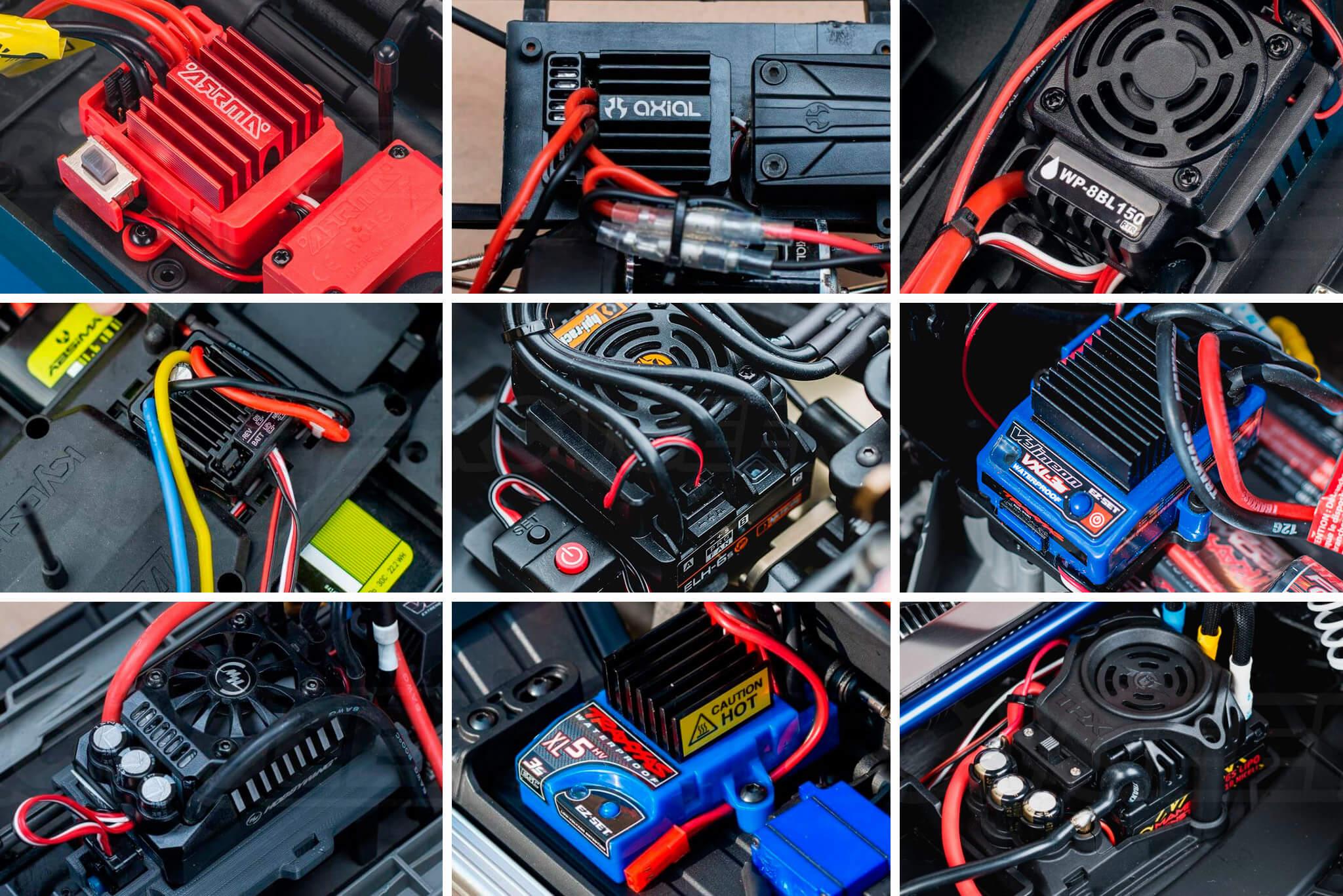
How does a transmitter send commands to an RC speed controller?
So, you’re keen to know how an RC transmitter sends commands to a speed controller, right? Picture this: you’re the pilot, and the transmitter is your cockpit. Now, when you move the joystick or the trigger on the transmitter, it generates specific signals, like saying in Morse code, “Hey RC speed controller, it’s time to speed up, slow down, turn left or turn right.”
This transmitter then packs these signal commands into a package called a “signal packet” and sends it out into the air in the form of radio waves. The antenna on your RC speed controller receives this packet and translates the signals into electrical impulses. Now the magic happens: the speed controller decrypts these electrical impulses, understands the signals, and — bam! — your RC model responds to your command!
This process happens in a snap, making you feel like there’s a seamless connection between your every command and the RC model’s response. It’s a little like having a silent conversation with your model. Cool, right?
Remember my friend, this requires some skills and understanding. With patience and practice, you’ll master this beautiful dance between your fingers and your RC model, making it glide, zoom, or race just the way you command! Hang in there, you’re doing great!
Choosing the Right RC Speed Controller for Your Vehicle
Choosing the right RC speed controller for your vehicle can seem like navigating tricky twists and turns. It’s more than just buying the first one you see; it’s about making an informed choice tailored to your specific needs. For beginners, the process might feel like deciding on the perfect outfit for a special occasion – you want to get the accessories just right!
First things first, it’s essential to match the ESC to your motor and battery. Think of this as coordinating your shirt and tie – they need to complement each other. Voltage and current ratings are like sizes; they need to be a perfect match for optimal performance. There’s a vast range of options available on sites like AMain Hobbies.
- The Brushed motor controllers are also referred to as Mechanical Speed Controllers, and these are best for beginners due to their simpler operation.
- Brushless motor controllers, on the other hand, are more suitable for more experienced hobbyists due to their sophisticated operation. They provide high speed, greater efficiency, and require less maintenance.
Then there’s power requirements to consider. To put it simply, this like choosing between a lightweight summer jacket or a heavy winter coat – you’ve got to match the conditions. No point choosing a speed controller with a lower power if you’re running a high-power motor. If ignored, this could result in overheating and damage to your RC vehicle.
Finally, consider the type of RC vehicle you have. Just as you’d select a shoe based on the activity (you wouldn’t wear ballet flats for a marathon), there are specific speed controllers for cars, planes, boats, and helicopters. Sites like RC Roundup and MyRCtopia have excellent guides to help you make an informed choice.
Remember, understanding your ‘RC speed controller explained’ will not only save you time and money but will also enhance your experience on the track, in the air or across the waters. It’s about turning the complex into comprehensible, and the overwhelming into enjoyable!
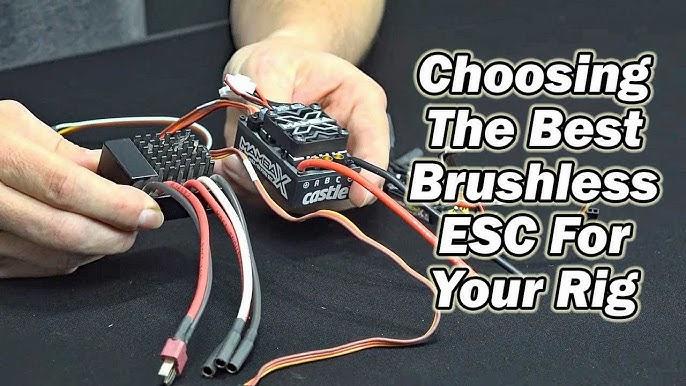
What are the different types of RC speed controllers available for different RC vehicles?
Oh, you’re absolutely right, my friend. The world of RC vehicles and their speed controllers can indeed be a little labyrinthine! Let’s break it down and make it easier for you. Basically, there are three main types of speed controllers you’re likely to encounter.
First, we have Brushed ESCs. These are typically for older or entry-level models. They are fairly simple and affordable, making them perfect for beginners just starting out in the RC world.
The next step up is Brushless ESCs. These bad boys provide smoother operation and greater efficiency than their Brushed counterparts. They are usually found in more advanced or specialized models as they can handle more power and offer improved performance.
And then we have Sensored and Sensorless ESCs. Sensored versions come with an extra cable to identify the position of the motor for a more precise control, while the Sensorless ones rely on the back EMF signal from the motor.
Picking the right ESC will really depend on your vehicle and how you plan to use it. Hope this gives you a little more clarity on your journey into RC control!
In the world of RC, nothing beats the thrill of watching your vehicle rev up and zoom off into the distance. But as exhilarating as this hobby is, it also calls for a bit of a maverick spirit, particularly when it comes to handling and maintaining the vital components involved. Foremost among these components is the humble yet mighty RC speed controller. Understanding the nuances of an RC speed controller, and how it impacts the performance of your vehicle can seem daunting. Still, once you make sense of the ABCs of it all, getting your RC vehicle to perform at its peak becomes a downright breeze.
So let’s talk about maintaining your speed controller. Just like you wouldn’t let your car run without periodic check-ups, your RC speed controller also requires some TLC. First things first, always make sure it’s clean. Dust and debris can form a blanket of sorts, potentially causing your speed controller to overheat. Some hobbyists swear by compressed air dusters, while others prefer a soft brush.
In tandem with cleanliness, cooling is also vital for the longevity of your speed controller. Overheating is an absolute no-no, so active cooling methods like heatsinks or fans can extend the life of your speed controller greatly. Keep in mind; a cool speed controller is a happy speed controller!
Sometimes, despite your best efforts, you might run into some trouble. But don’t sweat it, troubleshooting is just another part of the RC journey. Look out for red flags like your speed controller not running smoothly or your RC vehicle seeming sluggish. Dive into that user manual or head over to online hobby forums, and you’ll find a wealth of knowledge and insights shared by fellow enthusiasts.
All in all, the journey towards mastering RC speed controllers is as thrilling as controlling your RC vehicle itself. Once you’ve got it down, the sense of accomplishment is truly unmatchable. In the immortal words of Einstein, “The important thing is not to stop questioning.” So don’t back down from the challenges; they’re part of the journey to understanding RC speed controllers, enhancing your joy of the hobby even more. Keep the spirit of curiosity alive and remember, every great RC driver started exactly where you are today.

